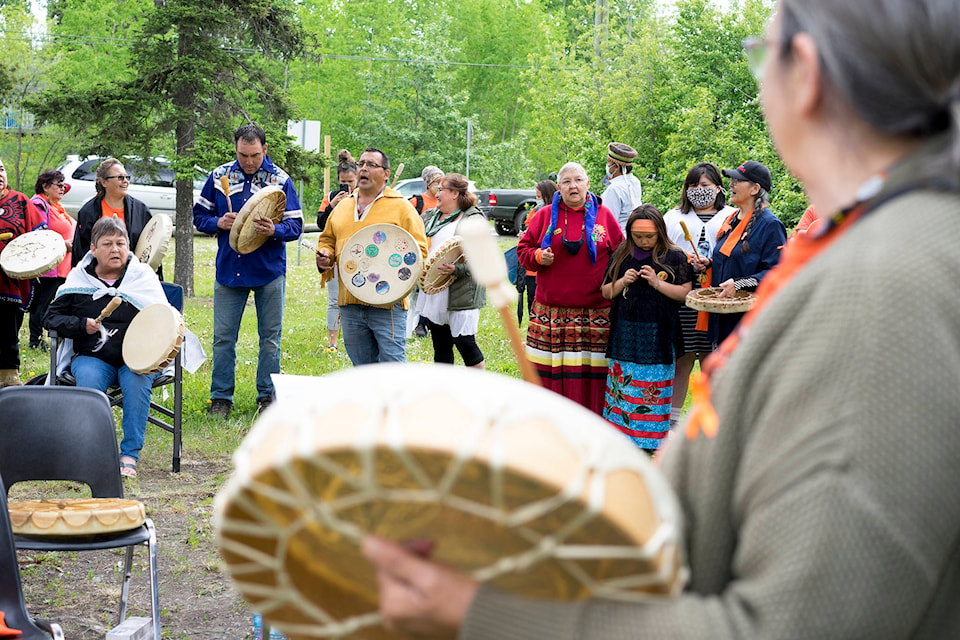Drumming and singing was held Friday afternoon at Cottonwood Park in Fort St. James as Nak’azdli Whut’en First Nation paid tribute to the 215 children found buried at the Kamloops Indian Residential School.
“It has been difficult, I think for every First Nations person across Canada, and that’s why the gatherings are happening to bring people together to share in that process of grieving and understanding,” Chief Aileen Prince told Black Press Media.
“I don’t think there is ever going to be understanding but understanding amongst ourselves of what this means to us.”
The vigil marked the first event by Nak’azdli Whut’en in light of the discovery confirmed late last month by Tk’emlúps te Secwépemc that worked with a ground-penetrating radar specialist.
“Right now, it’s still raw and too new,” Prince added.
“I think having to do this, having this gathering is going to help get everybody get to the point of being able to move forward.”
Prince’s father attended Lejac Residential School near Fraser Lake at Nadleh Whut’en First Nation for approximately eight years.
Read More: Trudeau calls on Catholic Church to take responsibility for residential schools
She was amongst the hundreds who participated in an emotional gathering at the former site in Northern B.C. Sunday, May 30 and said while it was difficult, she believes shedding tears and drumming and singing do help.
Lejac residential school survivor Terry Luggi said she had wanted to gather people together because of how they were hurting and had reached to Chief Larry Nooski, who was in support of a gathering taking place.
“I needed to make sure that our people were safe, so we had a number of certified professional counsellors on-site,” Luggi said, noting bouquets of flowers were available for family members that had a loved one attend Kamloops Residential School with elders blanketed with a blanket acknowledging their attendance.
”We also had some spiritual support.”
Luggi said she was personally triggered by news of the discovery at Kamloops and that there has also been losses at Lejac.
“Our people that attended Lejac, we all know that our children died there too. We all know that our children were buried there. Myself included,” she said.
Read More: Identifying children’s remains at B.C. residential school stalled by lack of records
“My uncle who is now deceased told me on his death bed there were children that were there in the walls of the school, in the grounds of the school.”
The remains of the 215 children at the former Kamloops residential school for many First Nations people is not so much a discovery but a public affirmation of the ugly truth of what happened at residential school.
“I think this should be considered crimes against humanity and the church and the government should be held accountable along with the RCMP,” Prince said.
“The church knew exactly what was going on and the government knew exactly what was going on and it takes a lot of people that are in agreement to cover up something like this.”
As the healing journey continues, Prince encourages everyone to reach out and express their feelings.
“People need to understand this is a time for us to process, grieve and come to terms with our own journey and where we’re going to go from here.”
Do you have a comment about this story? email:
rebecca.dyok@wltribune.com
Like us on Facebook and follow us on Twitter.
